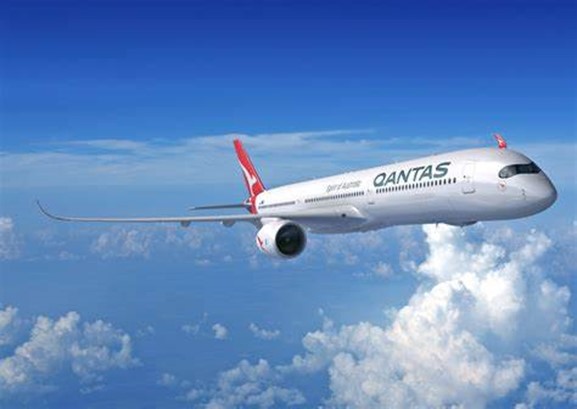
Qantas A350-1000 – courtesy Qantas
Following the pandemic, ultra-long-haul flights are back on the agenda. Are customers and crews ready for longer journeys?
As new wide bodies like the Airbus A350-1000 and Boeing 787-9 can operate nonstop for longer journeys without refuelling, that issue is being raised and answered quickly. Australia-UK and Australia-US east coast services are examples.
Qantas will introduce nonstop services on these routes in 2025 as part of “Project Sunrise”. “It’s the last frontier and the final fix for the constraint of distance that has always hindered travel to Australia,” Qantas Group CEO Alan Joyce says.
The accomplishment may be physically doable, but how will passengers and flight crews handle 18-hour nonstop flights?”
Long-term inactivity in confined spaces is known to cause discomfort and risk.
Deep vein thrombosis (DVT) and pulmonary embolisms, which can develop days or weeks after a lengthy journey, are the most well-known forms of venous thromboembolism (VTE). Sitting for long periods increases the chance of these events, which vary by a pre-existing condition. Long-haul travellers are advised to stretch or exercise in their seats; however, the advice is ignored by most.
Sydney-New York and Sydney-London nonstop routes will raise such dangers. Risk research has been ongoing for years.
Onboard comfort and well-being depend on more than minimising physical risks, which are relatively modest compared to many activities people do on the ground. When alternatives, especially in the main cabin, are limited, how to make passengers feel comfortable during and after a long flight is also a prevalent challenge.
Qantas’ passenger wellness study is extensive. The airline has worked with the University of Sydney’s Charles Perkins Centre (CPC) to alleviate fatigue.
Using earplugs or noise-cancelling headphones, restricting alcohol intake, or using sleep drugs were all well-known strategies to achieve this.
Researchers also observed that many travellers ate healthily after arriving to aid their recuperation.
However, many were unaware of one element that has proven to reduce jetlag: intentional exposure to sunshine following arrival.
In preparation for Project Sunrise, over 500 passengers on Qantas international flights over nine hours were studied inflight. The goal was to create a baseline for researchers and the national carrier to design new inflight well-being techniques.
Pre-pandemic strategies for passengers on Qantas’ longest flight, Perth-London (17 hours), included light therapy in the Perth transit lounge to help passengers adjust to the local time zone, outdoor areas in the lounge and terminal for natural light, and a wellbeing studio in the lounge for stretching. Of course, these features will only be available to high-tier frequent flyers or premium cabin customers.
In 2019, Qantas flew straight from New York to Sydney on Project Sunrise study flights with 50 passengers and crew to give the 787-9s an acceptable range.
Six Qantas, frequent flyer volunteers, wore wearable technology devices and followed a CPC-recommended sleep, eating, and physical activity regimen during the 19.5-hour journey. Researchers examined the effects of cabin illumination, mobility, inflight entertainment, and passengers’ food and drink intake on well-being and body clocks.
The goal is to get people up and to move around the cabin numerous times during an ultra-long flight, even for a few minutes. Squats are particularly effective at raising heart rate and circulation.
Food is also essential, and early morning departure was part of Qantas’ testing flights. The first meal, which included a steak sandwich and milk-based pudding, was more like a light dinner than a breakfast. These foods make the body tell the brain to sleep. A spicy main dish and coffee were delivered just before arrival to wake up the passenger.
Flight crew sleep habits have been investigated by the UK’s QinetiQ military technology business and other European experts, including Singapore Airlines’ initial ultra-long-haul services to New York and Los Angeles over 20 years ago.
Planning pilots’ sleep schedules before and throughout flights to guarantee they can safely perform procedures after long flights have been a significant challenge.
Long-haul services already have two crews, with the crew undertaking the landing recommended to have a rest period close (but not too close) to the top of the descent.
The researchers discovered that long-haul flight crew members’ onboard rest compartments were typically high-quality, which helped them sleep, but the time of day they slept also mattered. This meant that ultralong-haul pilots’ rest times might need to be adjusted based on the flight’s departure time and length.
In May 2022, Qantas ordered 12 Airbus A350-1000s to fly nonstop from New York, London, and maybe Paris and Frankfurt to Australia. These will commence in late 2025 and shorten one-stop services by four hours. After a long day, it will appeal to business travellers and some leisure travellers who wish to avoid a layover.
The carrier also revealed A350 cabin designs. 238 seats will be available, 140 less than a typical aircraft configuration. First-class passengers will enjoy suites with beds and recliners. Business-class passengers will enjoy suites, while the new premium economy and economy seats will have pitches of 40 in. and 33 in., respectively, giving them more legroom than conventional economy cabins.
An open space beside one of the galleys will be a well-being zone for mobility, stretching, and hydration.
We can expect these services to have higher airfares to compensate for the airlines’ capacity loss.
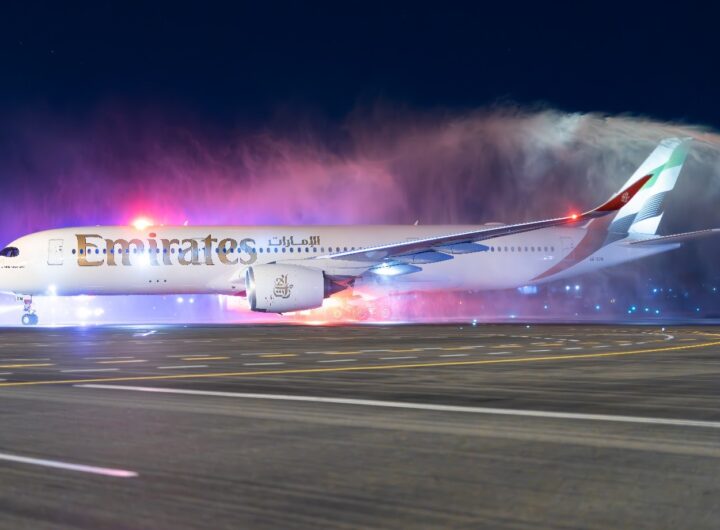 Emirates A350 Debuts in Adelaide with New Premium Economy, Boosting Connectivity and Comfort to Dubai
Emirates A350 Debuts in Adelaide with New Premium Economy, Boosting Connectivity and Comfort to Dubai  Qantas Elevates A380 First Class with New Fine Dining, Aesop Amenity Kits and Bollinger Champagne
Qantas Elevates A380 First Class with New Fine Dining, Aesop Amenity Kits and Bollinger Champagne 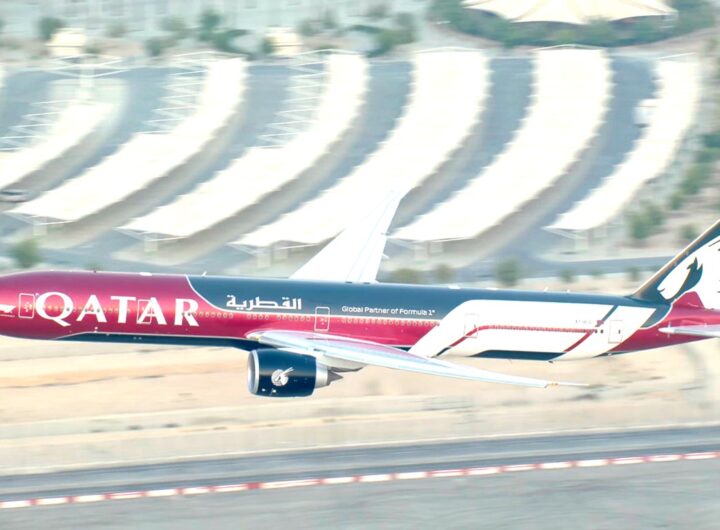 Qatar Airways’ New Formula 1 Livery Takes Off: Swizz Beatz–Designed Boeing 777 Tours the World After Qatar Grand Prix Debut
Qatar Airways’ New Formula 1 Livery Takes Off: Swizz Beatz–Designed Boeing 777 Tours the World After Qatar Grand Prix Debut 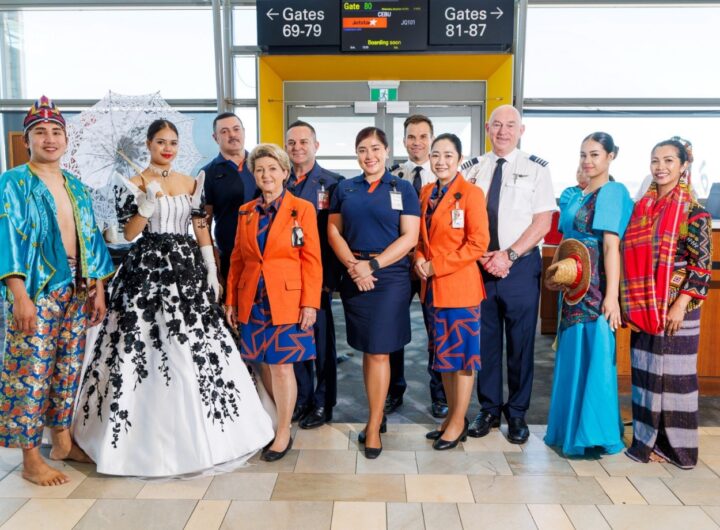 Jetstar Launches First Direct Brisbane–Cebu Flights: New Gateway from Queensland to One of the Philippines’ Most Beautiful Islands
Jetstar Launches First Direct Brisbane–Cebu Flights: New Gateway from Queensland to One of the Philippines’ Most Beautiful Islands 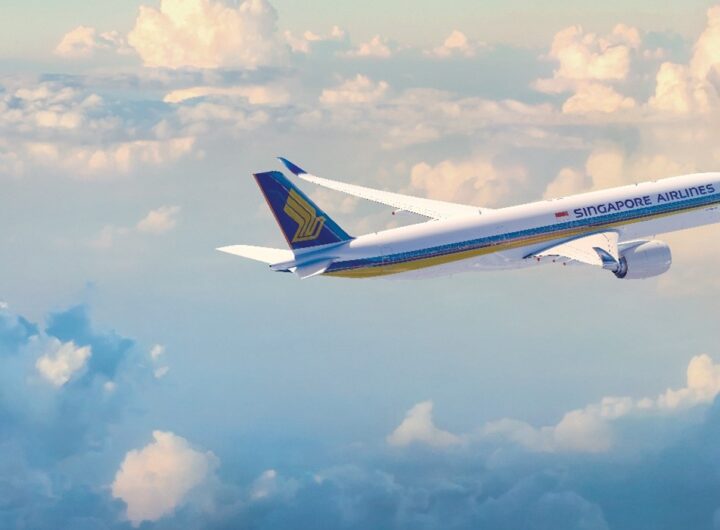 Singapore Introduces First-Ever Mandatory Sustainable Aviation Fuel Levy Starting 2026
Singapore Introduces First-Ever Mandatory Sustainable Aviation Fuel Levy Starting 2026 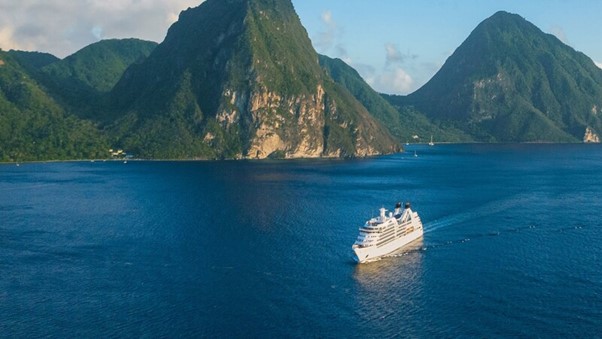 Seabourn’s ‘Explore More Event’: Save Up to 15% Plus Shipboard Credit on Ultra-Luxury Cruises
Seabourn’s ‘Explore More Event’: Save Up to 15% Plus Shipboard Credit on Ultra-Luxury Cruises  Silversea Wave Season 2026: Save Up to 40% on Luxury Cruises to All Seven Continents
Silversea Wave Season 2026: Save Up to 40% on Luxury Cruises to All Seven Continents 